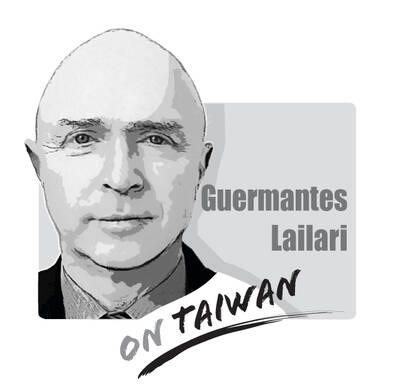Tomorrow Tibetans around the world are to mark the 60th anniversary of National Uprising Day, commemorating the day when hundreds of thousands of Tibetans surrounded Norbulinka Palace in Lhasa to protect the Dalai Lama against a possible Chinese kidnapping attempt: It was a peaceful protest against the Chinese Communist Party’s (CCP) rule over Tibet and its harsh occupation by the People’s Liberation Army (PLA).
Tibetans had grown increasingly restive since the PLA’s invasion in October 1950, and while the 1951 peace treaty between the Dalai Lama’s government and Beijing was supposed to ensure his control over his nation’s domestic affairs, and protect Tibetan culture, the reality was far different.
Resistance to Chinese rule had built up to the point that by the end of 1958 the PLA was threatening to bomb Lhasa, but it was the PLA’s invitation to the Dalai Lama to attend a performance and tea at its Lhasa headquarters — without bodyguards or Tibetan officials — that led Tibetans to surround Norbulinka.
While March 10 ended peacefully, the crowds around the palace refused to leave and over the next few days the PLA moved artillery into place, trained on the palace, so on March 17 the Dalai Lama was smuggled out to begin his escape to India.
Less than eight years after signing a peace treaty with Lhasa, Beijing had reneged on its promises, unhappy that Tibetans were not conforming to the CCP’s demands.
The 1984 Sino-British Joint Declaration that led to the 1997 handover of Hong Kong stipulated that the Hong Kong Special Administrative Region would have executive, legislative and independent judicial power, including final adjudication, and the current social and economic system — including the rights and freedom of speech, the press, assembly, association, travel, movement and religious belief. It guaranteed Hong Kong full autonomy except for foreign affairs and defense.
However, despite Beijing’s trumpeting of its “one country, two systems” model, its promises on Hong Kong began to crumble within a decade.
The erosion has steadily increased since Xi Jinping (習近平) became CCP secretary-general in November 2012 and president of the People’s Republic of China the following March, a reflection of his widespread repression of China’s nascent civil society.
It is worth remembering just what Beijing’s promises and treaties are worth, given a drumbeat in the pan-blue camp for a cross-strait peace treaty if the Chinese Nationalist Party (KMT) is returned to the Presidential Office next year.
While KMT Chairman Wu Den-yih (吳敦義) has not formally announced his candidacy, Sun Yat-sen School president Chang Ya-chung (張亞中) has, and both have talked about seeking such a pact.
If treaties signed in 1951 and 1984 were so easily trampled by Beijing, Taiwanese should be under no illusions about whether the democracy they fought so hard for would survive in the face of a “peace treaty.” If the “one country, two systems” model imposed on Hong Kong — along with its risible shadow that somehow it would help bring democracy to China — was unpalatable to Taiwanese in 1997, it is even more so now as China under Xi marches steadily backward, despite its economic advances.
Beijing’s new “social credit” system aimed at ensuring “trustworthy” citizens has already led to millions of people being barred from taking flights, buying train tickets, using public transportation, and buying insurance or real estate.
If Taiwan’s White Terror era was bad, technological advances have made the CCP’s repressive tactics more Orwellian than the KMT authoritarian state ever dreamed of.
Anyone who thinks a cross-strait treaty would benefit Taiwan is simply deluding themselves.

Chinese state-owned companies COSCO Shipping Corporation and China Merchants have a 30 percent stake in Kaohsiung Port’s Kao Ming Container Terminal (Terminal No. 6) and COSCO leases Berths 65 and 66. It is extremely dangerous to allow Chinese companies or state-owned companies to operate critical infrastructure. Deterrence theorists are familiar with the concepts of deterrence “by punishment” and “by denial.” Deterrence by punishment threatens an aggressor with prohibitive costs (like retaliation or sanctions) that outweigh the benefits of their action, while deterrence by denial aims to make an attack so difficult that it becomes pointless. Elbridge Colby, currently serving as the Under
The Ministry of the Interior on Thursday last week said it ordered Internet service providers to block access to Chinese social media platform Xiaohongshu (小紅書, also known as RedNote in English) for a year, citing security risks and more than 1,700 alleged fraud cases on the platform since last year. The order took effect immediately, abruptly affecting more than 3 million users in Taiwan, and sparked discussions among politicians, online influencers and the public. The platform is often described as China’s version of Instagram or Pinterest, combining visual social media with e-commerce, and its users are predominantly young urban women,
Most Hong Kongers ignored the elections for its Legislative Council (LegCo) in 2021 and did so once again on Sunday. Unlike in 2021, moderate democrats who pledged their allegiance to Beijing were absent from the ballots this year. The electoral system overhaul is apparent revenge by Beijing for the democracy movement. On Sunday, the Hong Kong “patriots-only” election of the LegCo had a record-low turnout in the five geographical constituencies, with only 1.3 million people casting their ballots on the only seats that most Hong Kongers are eligible to vote for. Blank and invalid votes were up 50 percent from the previous
Japanese Prime Minister Sanae Takaichi lit a fuse the moment she declared that trouble for Taiwan means trouble for Japan. Beijing roared, Tokyo braced and like a plot twist nobody expected that early in the story, US President Donald Trump suddenly picked up the phone to talk to her. For a man who normally prefers to keep Asia guessing, the move itself was striking. What followed was even more intriguing. No one outside the room knows the exact phrasing, the tone or the diplomatic eyebrow raises exchanged, but the broad takeaway circulating among people familiar with the call was this: Trump did